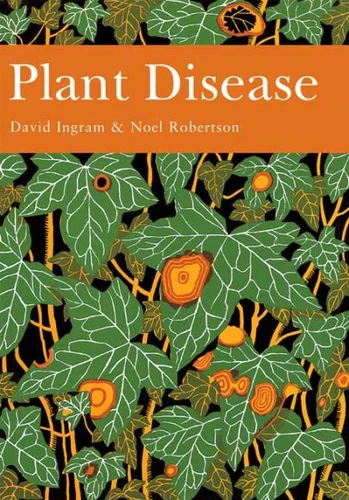Plant Disease
Par : ,Formats :
Disponible dans votre compte client Decitre ou Furet du Nord dès validation de votre commande. Le format ePub protégé est :
- Compatible avec une lecture sur My Vivlio (smartphone, tablette, ordinateur)
- Compatible avec une lecture sur liseuses Vivlio
- Pour les liseuses autres que Vivlio, vous devez utiliser le logiciel Adobe Digital Edition. Non compatible avec la lecture sur les liseuses Kindle, Remarkable et Sony
- Non compatible avec un achat hors France métropolitaine
 , qui est-ce ?
, qui est-ce ?Notre partenaire de plateforme de lecture numérique où vous retrouverez l'ensemble de vos ebooks gratuitement
Pour en savoir plus sur nos ebooks, consultez notre aide en ligne ici
- Nombre de pages288
- FormatePub
- ISBN978-0-00-740669-2
- EAN9780007406692
- Date de parution11/04/2013
- Protection num.Adobe DRM
- Infos supplémentairesepub
- ÉditeurCollins
Résumé
Plant Disease covers all aspects of diseases of plants growing in the wild or likely to be encountered on cultivated plants in farm, forest and garden. This edition is exclusive to newnaturalists.com
This book covers all aspects of diseases of plants growing in the wild or likely to be encountered on cultivated plants in farm, forest and garden.
Between 1845 and 1851 one and a half million Irish men, women and children died in misery from starvation and disease; the result of potato blight, a fungal disease that destroyed their potato crops.
A million more people, driven to despair by the succession of appalling harvests, emigrated, mostly to America. So it was that a plant disease changed the course of history, its economic effects causing not only social but also major political upheaval. Many plant diseases have had surprisingly far reaching social and economic effects, so the study of these diseases is of great interest and importance to scientists, horticulturists, agriculturalists and foresters.
In Plant Disease: A Natural History, Ingram and Robertson draw on personal observations in the field and laboratory to discuss all types of diseases caused by fungi, from rots and mildews to rusts, smuts and tumours. The symptoms encountered in the wild are described, together with their causes. A final chapter discusses the diseases caused by viruses, bacteria and flowering plants.
A million more people, driven to despair by the succession of appalling harvests, emigrated, mostly to America. So it was that a plant disease changed the course of history, its economic effects causing not only social but also major political upheaval. Many plant diseases have had surprisingly far reaching social and economic effects, so the study of these diseases is of great interest and importance to scientists, horticulturists, agriculturalists and foresters.
In Plant Disease: A Natural History, Ingram and Robertson draw on personal observations in the field and laboratory to discuss all types of diseases caused by fungi, from rots and mildews to rusts, smuts and tumours. The symptoms encountered in the wild are described, together with their causes. A final chapter discusses the diseases caused by viruses, bacteria and flowering plants.
Plant Disease covers all aspects of diseases of plants growing in the wild or likely to be encountered on cultivated plants in farm, forest and garden. This edition is exclusive to newnaturalists.com
This book covers all aspects of diseases of plants growing in the wild or likely to be encountered on cultivated plants in farm, forest and garden.
Between 1845 and 1851 one and a half million Irish men, women and children died in misery from starvation and disease; the result of potato blight, a fungal disease that destroyed their potato crops.
A million more people, driven to despair by the succession of appalling harvests, emigrated, mostly to America. So it was that a plant disease changed the course of history, its economic effects causing not only social but also major political upheaval. Many plant diseases have had surprisingly far reaching social and economic effects, so the study of these diseases is of great interest and importance to scientists, horticulturists, agriculturalists and foresters.
In Plant Disease: A Natural History, Ingram and Robertson draw on personal observations in the field and laboratory to discuss all types of diseases caused by fungi, from rots and mildews to rusts, smuts and tumours. The symptoms encountered in the wild are described, together with their causes. A final chapter discusses the diseases caused by viruses, bacteria and flowering plants.
A million more people, driven to despair by the succession of appalling harvests, emigrated, mostly to America. So it was that a plant disease changed the course of history, its economic effects causing not only social but also major political upheaval. Many plant diseases have had surprisingly far reaching social and economic effects, so the study of these diseases is of great interest and importance to scientists, horticulturists, agriculturalists and foresters.
In Plant Disease: A Natural History, Ingram and Robertson draw on personal observations in the field and laboratory to discuss all types of diseases caused by fungi, from rots and mildews to rusts, smuts and tumours. The symptoms encountered in the wild are described, together with their causes. A final chapter discusses the diseases caused by viruses, bacteria and flowering plants.



